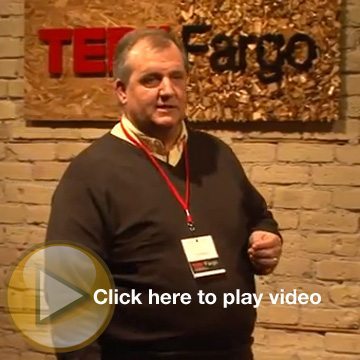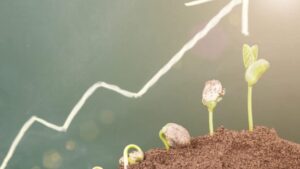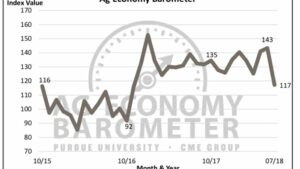Much has been said in agricultural and policy circles about the need to feed the world. In fact, the real opportunity we have in the seed industry is to provide the tools for global food production. Along with seed, these tools include agronomic technology to grow, harvest, store, process and distribute crops. We can take some big steps towards a truly sustainable global food supply by using science, and also release farmers in developing nations from the confines of subsistence farming.
The biggest challenges we face are, respectively:
• Rising global population;
• Limited land area on which to grow food;
• Climate change, which affects agricultural output; and
• Unequal distribution of wealth and access to food around the world.
Global Population
Currently, we share planet Earth with just under seven billion people. The United Nations expects this figure to grow by at least another two billion by the year 2050, an increase of around 30 percent. It is generally accepted that, as the population increases and people in emerging regions change their diets and require increased food sources, agricultural output will need to double to meet this demand. Crop yields are still increasing as a result of new variety development, but the growth rate has slowed with today’s technologies. New technologies hold the promise to dramatically increase this growth rate again, as a “next step” in our agricultural development.
Land Area
Of the world’s total land area, 40 percent is now devoted to food production, with one-third used for food crops and the rest for animal husbandry. In the developed world, land is being taken out of agricultural production. In the United States, since the 1970s, urbanization of land has doubled, leaving less land available for farming. Agricultural land needs intensification to maintain high production rates, and with technological advances, productivity is rising. In contrast, land is being converted for agricultural use in many parts of the developing world. Much of this new farm land is marginal, with average productivity therefore declining. There is less productive land available to support tomorrow’s world population.
Climate Change
Regardless of the causes of climate change, long-term climate cycles are impacting growing conditions around the world. An awareness of genetics and plant characteristics is needed in order to make wise decisions on growing food in each region. In areas further from the equator, new crops can be grown that were not well adapted before, while in areas nearer to the equator, heat tolerance, water-use efficiency and other characteristics will become even more important. Variable and less predictable weather patterns are also major challenges for farmers. In the coming decades, temperature and precipitation patterns could change in ways that will require ongoing adaptation in varieties and growing methods to ensure our food supply.
Distribution
Total global food production measured in caloric output is sufficient for our current population; however, almost one billion people (14 percent of Earth’s inhabitants) are currently undernourished. There are many reasons for this including politics, corruption, crop waste, food transport difficulties and severe poverty issues. The seed industry can help improve this situation with the development of varieties and agronomic techniques that will lead to increased food production in local environments, using locally appropriate technologies.
What’s the Solution?
The solutions to each of the above individual issues, and also the combined problem which they create—the need to produce more food on less land under changing environmental conditions, while ensuring food is available to the entire global population—are based on scientific knowledge. We must continue to discover and use new technologies, and find ways to better implement existing ones.
A major debate is happening over so-called high-tech and low-tech farming, which really focuses on the mutual benefits and coexistence of conventional biotechnology and organic agriculture. The debate should not be on IF these systems can coexist, but on HOW they coexist, and mutually build on the strengths of each system. On one side, the word “technology” itself is ostracized, and on the other, the word “organic” is seen as representing a purely ideological movement rather than a production method which is based on sound science (soil science for instance). Rather than competing with each other, these systems need to be complementary.
Another debate happening on a global level involves the cost of food. On the production side, agriculture accounts for less than five percent of the Gross World Product (the combined GDP of all nations). On the consumption side, most people in the developed world spend between 10 to 20 percent of their disposable income on food; whereas in the developing world, this can be 80 percent or higher. When not much money is available to start with, the latter case can be frightening. So, in developing nations, the cost of food in relation to income and other basic needs represents a clear problem. This situation has recently worsened due to higher food prices caused by poor crop yields affected by regional severe weather (both droughts and floods), increased fuel costs, short-term speculation, currency exchanges and other (often political) issues.
This points to a conflict where farmers do not adequately participate in the world’s economy, but yet it is said that food prices are high. The question must be asked whether food prices in developed countries are actually quite low, while developing countries struggle more with low yields, poor food distribution and low overall income. If technology can be used to increase basic crop yields in relation to inputs, if farmers can receive a fair income, and if consumers have access to this food production at a reasonable cost, then the system works. But farmers in developed countries have not seen crop prices go up to any major or sustained extent since the 1950s, certainly not in relation to input costs; and farmers in the developing world are mostly still subsistence farming. Farmers in both areas can benefit from further investments in technology, providing increased returns to them while still allowing appropriate food prices.
What Kind of Technology Is Needed?
First of all, we need to discuss agronomic technology, which is science and information used to produce and harvest crops. This includes soil science, pest control, crop rotation and water management. Any crop production system is based on sound application of knowledge in various fields to maximize the potential of the seed, farm location and environmental conditions during the season. In all crop systems, regardless of which seed variety is used, these elements must be maximized. This is appropriate use of technology.
In terms of plant breeding, there are several methods that are considered “high tech.” These include the development of various types of hybrids, Marker Assisted Selection, the use of QTLs in breeding, High Throughput Genotyping and the use of transgenic or genetically enhanced technology. Examples of the latter are the well-known RR and Bt traits, as well as more recently the use of several stacked traits and refuge in a bag technology (where non-GE insect-resistant seeds are mixed in the bag, giving insects a refuge area and ensuring there is no monoculture of the GE plants). All of these are well-regulated systems, and are appropriate technologies for their particular purposes.
One production method which is often discussed is organic food production. This can be defined in several ways, including at the legal level, or from the environmental, human health, or socio-economic perspectives. This is also technology, namely the use of knowledge about natural systems to improve the output per a given and
controlled input. This is the basis for sustainability.
In 1987, the Brundtland Commission of the United Nations described the term sustainable development as: “…development that meets the needs of the present without compromising the ability of future generations to meet their own needs.” This is a common goal of farmers and seed breeders, regardless of whether they use high-tech, conventional or organic methods.
The three production elements described above should all come together in the near future, when we no longer have a polarized discussion about technology, and appropriate and value-added traits can be incorporated into crop varieties via various modern techniques, crop production systems focus on reduced inputs and increased outputs, and when technology is used along the entire chain. We should, and can, achieve “sustainable GE farming,” as well as “GE organics”—in fact, they are one and the same. It is called farm technology to feed the world. Marc Cool
Editor’s Note: Marc Cool is a fifth-generation seedsman with over 20 years of professional experience in the seed industry. His experience ranges from working in California’s alfalfa seed industry and Oregon’s turf and forage grass industry, to developing a commercial organic seed business in New Mexico. He is an active member of various seed trade associations, and serves as a board member and officer of the American Seed Trade Association.















